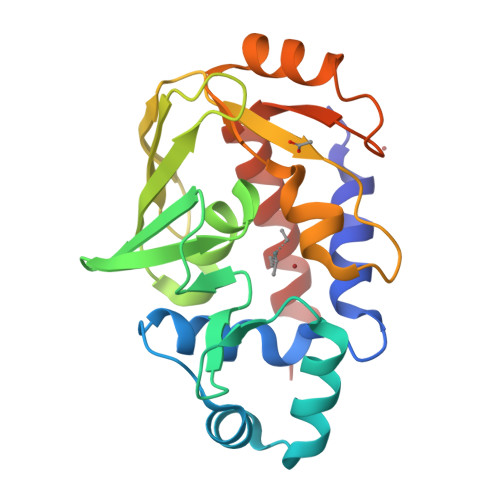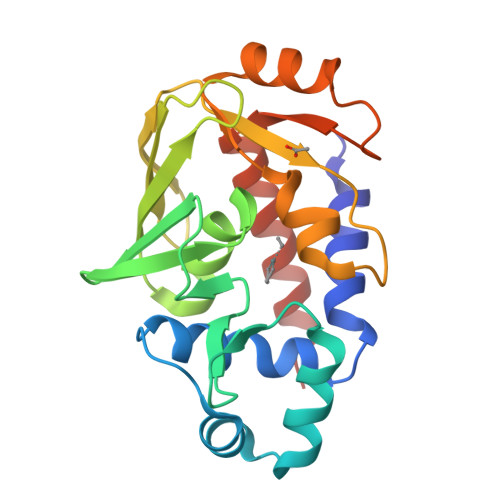Structural and Biochemical Characterization of Organotin and Organolead Compounds Binding to the Organomercurial Lyase MerB Provide New Insights into Its Mechanism of Carbon-Metal Bond Cleavage.
Wahba, H.M., Stevenson, M.J., Mansour, A., Sygusch, J., Wilcox, D.E., Omichinski, J.G.(2017) J Am Chem Soc 139: 910-921
- PubMed: 27989130
- DOI: https://doi.org/10.1021/jacs.6b11327
- Primary Citation of Related Structures:
5U79, 5U7A, 5U7B, 5U7C, 5U82, 5U83, 5U88 - PubMed Abstract:
The organomercurial lyase MerB has the unique ability to cleave carbon-Hg bonds, and structural studies indicate that three residues in the active site (C96, D99, and C159 in E. coli MerB) play important roles in the carbon-Hg bond cleavage. However, the role of each residue in carbon-metal bond cleavage has not been well-defined. To do so, we have structurally and biophysically characterized the interaction of MerB with a series of organotin and organolead compounds. Studies with two known inhibitors of MerB, dimethyltin (DMT) and triethyltin (TET), reveal that they inhibit by different mechanisms. In both cases the initial binding is to D99, but DMT subsequently binds to C96, which induces a conformation change in the active site. In contrast, diethyltin (DET) is a substrate for MerB and the Sn IV product remains bound in the active site in a coordination similar to that of Hg II following cleavage of organomercurial compounds. The results with analogous organolead compounds are similar in that trimethyllead (TML) is not cleaved and binds only to D99, whereas diethyllead (DEL) is a substrate and the Pb IV product remains bound in the active site. Binding and cleavage is an exothermic reaction, while binding to D99 has negligible net heat flow. These results show that initial binding of organometallic compounds to MerB occurs at D99 followed, in some cases, by cleavage and loss of the organic moieties and binding of the metal ion product to C96, D99, and C159. The N-terminus of MerA is able to extract the bound Pb VI but not the bound Sn IV . These results suggest that MerB could be utilized for bioremediation applications, but certain organolead and organotin compounds may present an obstacle by inhibiting the enzyme.
Organizational Affiliation:
Département de Biochimie et Médicine Moléculaire, Université de Montréal , Montréal, Quebec H3C 3J7 Canada.




















